sultan of Egypt was the status held by the rulers of Egypt after the establishment of the Ayyubid dynasty of Saladin in 1174 until the Ottoman conquest of Egypt in 1517. Though the extent of the Egyptian Sultanate ebbed and flowed, it generally included Sham and Hejaz, with the consequence that the Ayyubid and later Mamluk sultans were also regarded as the Sultans of Syria. From 1914 the title was once again used by the heads of the Muhammad Ali dynasty of Egypt and Sudan, later being replaced by the title of King of Egypt and Sudan in 1922.
Painting from 1779 of a councilor to the Sultan of Egypt during Mamluk rule.
Contents
Ayyubid Dynasty
Main article: Ayyubid dynasty
Prior to the rise of Saladin, Egypt was the center of the Shia Fatimid Caliphate, the only period in Islamic history when a caliphate was ruled by members of the Shia branch of Islam. The Fatimids had long sought to completely supplant the Sunni Abbasid Caliphate based in Iraq, and like their Abbasid rivals they also took the title Caliph,
representing their claim to the highest status within the Islamic
hierarchy. However, with Saladin's rise to power in 1169, Egypt returned
to the Sunni fold and the Abbasid Caliphate. Recognizing the Abbasid
Caliph as his theoretical superior, Saladin took the title of Sultan
in 1174, though from this point until the Ottoman conquest, supreme
power in the caliphate would come to rest with the Sultan of Egypt.Mameluke dynasties
Main article: Mamluk Sultanate (Cairo)
In 1250, the Ayyubids were overthrown by the Mamelukes, who established the Bahri dynasty and whose rulers also took the title sultan. Notable Bahri sultans include Qutuz, who defeated the invading Mongol army of Hulagu at the Battle of Ain Jalut, and Baibars, who finally recaptured the last remnants of the Crusader Kingdom of Jerusalem. The Bahri were later overthrown by a rival Mameluke group, who established the Burgi Dynasty in 1382.Ottoman Sultanate and autonomous Khedivate
Main articles: Egypt Eyalet and Khedivate of Egypt
Coat of Arms of the Sultan of Egypt (1914–1922)
In 1523, the Ottoman-appointed Turkish governor of Egypt, Hain Ahmed Pasha, declared himself the Sultan of Egypt and Egypt independent from the Ottoman Empire. He struck his own coins to legitimize his rule, but soon thereafter, Ottoman forces under Pargalı Ibrahim Pasha captured him and executed him, with Ibrahim Pasha assuming the governorship until he found a more permanent replacement, Hadım Süleyman Pasha.
Following the defeat of Napoleon I's forces in 1801, Muhammad Ali Pasha seized power, overthrowing the Mamelukes, and declaring himself ruler of Egypt. In 1805, the Ottoman Sultan Selim III reluctantly recognized him as Wāli under Ottoman suzerainty. Muhammad Ali, however, styled himself as Khedive, and though technically a vassal of the Ottoman Empire, governed Egypt as if it were an independent state. Seeking to rival and ultimately supplant the Ottoman Sultan, Muhammad Ali implemented a rapid modernization and militarization program, and expanded Egypt's borders south into Sudan and north into Syria. Eventually he waged war on the Ottoman Empire with the intention of overthrowing the ruling Osman Dynasty and replacing it with his own. Though the intervention of the Great Powers prevented Muhammad Ali from realizing his grandiose ambitions of becoming sultan himself, obliging Egypt to remain technically part of the Ottoman Empire, Egypt's autonomy survived his death with the Porte recognizing the Muhammad Ali Dynasty as hereditary rulers of the country.
Hussein Kamel, Sultan of Egypt, 1914–1917.
Restoration of Egyptian Sultanate
Main article: Sultanate of Egypt
Further information: Kingdom of Egypt
From 1882 onwards, Egypt's status became deeply convoluted:
officially a province of the Ottoman Empire, semi-officially a virtually
independent state with its own monarchy, armed forces, and territorial
possessions in Sudan,
and for practical purposes a British puppet. The legal fiction of
Ottoman sovereignty in Egypt was finally ended in 1914 when the Ottoman
Empire joined the Central Powers in First World War. Alarmed that the anti-British Khedive Abbas II would side with the Ottomans, the British deposed him in favor of his uncle Hussein Kamel and declared Egypt a British protectorate. Symbolizing the official end of Ottoman rule, Hussein Kamel took the title Sultan as did his brother Fuad I
who succeeded him in 1917, though in reality Egypt remained under
British domination. Both Hussein Kamel and Fuad maintained Egypt's claim
to Sudan, with Egyptian nationalists declaring both in turn to be the "Sultan of Egypt and Sudan".Rising nationalist anger at the continued British occupation forced Britain to formally recognize Egyptian independence, in 1922. However, the title of Sultan was dropped and replaced with King. Nationalist leader Saad Zaghlul, who was later exiled by the British, maintained that this was because the British refused to recognize a sovereign Egyptian ruler who outranked their own king (in the hierarchy of titles, sultan, like shah in Iran, is comparable to emperor, being a sovereign who recognizes no secular superior). Another reason offered for the change in title, is that it reflected the growing secularization of Egypt at the time, as sultan has Islamic overtones, whereas the Arabic word for king, malik, does not.[citation needed]
Upon overthrowing Fuad's son, King Farouk I, in the Egyptian Revolution of 1952, the Free Officers briefly considered declaring his infant son Sultan to reinforce Egypt's sovereignty over Sudan and demonstrate their rejection of British occupation. However, since the revolutionaries had already decided to abolish the Egyptian monarchy after a brief period of consolidating their hold on power, they determined that it would be an idle gesture and Farouk's son was duly declared King Fuad II. The following year, on 18 June 1953, the revolutionary government officially abolished the monarchy and Egypt became a republic.
List of Sultans
Ayyubid Dynasty
- Saladin (1171–1193)
- Al-Aziz (1193–1198)
- Al-Mansur (1198–1200)
- Al-Adil I (1200–1218)
- Al-Kamil (1218–1238)
- Al-Adil II (1238–1240)
- As-Salih Ayyub (1240–1249)
- Turanshah (1249–1250)
- Al-Ashraf II (1250–1254) (nominally, actually the Mamluk Aibek ruled)
Bahri Dynasty
- 1250 Shajar al-Durr (al-Salih Ayyub's Widow de facto ruler of Egypt)
- 1250 al-Muizz Izz-ad-Din Aybak
- 1257 al-Mansur Nur-ad-Din Ali
- 1259 al-Muzaffar Saif ad-Din Qutuz
- 1260 al-Zahir Rukn-ad-Din Baibars al-Bunduqdari
- 1277 al-Said Nasir-ad-Din Barakah Khan
- 1280 al-Adil Badr al-Din Solamish
- 1280 al-Mansur Saif-ad-Din Qalawun al-Alfi
- 1290 al-Ashraf Salah-ad-Din Khalil
- 1294 al-Nasir Nasir-ad-Din Muhammad ibn Qalawun first reign
- 1295 al-Adil Zayn-ad-Din Kitbugha
he Ottoman Empire (/ˈɒtəmən/; Ottoman Turkish: دَوْلَتِ عَلِيّهٔ عُثمَانِیّه, Devlet-i Aliyye-i Osmâniyye, Modern Turkish: Osmanlı İmparatorluğu or Osmanlı Devleti), was an empire founded in 1299 by Oghuz Turks under Osman I in northwestern Anatolia.[7] With conquests in the Balkans by Murad I between 1362 and 1389, the Ottoman sultanate was transformed into a transcontinental empire and claimant to caliphate. The Ottomans overthrew the Byzantine Empire with the 1453 conquest of Constantinople (present-day Istanbul) by Mehmed the Conqueror.[8][9][10]
During the 16th and 17th centuries, in particular at the height of its power under the reign of Suleiman the Magnificent, the Ottoman Empire was a powerful multinational, multilingual empire controlling much of Southeast Europe, Western Asia, the Caucasus, North Africa, and the Horn of Africa.[11] At the beginning of the 17th century the empire contained 32 provinces and numerous vassal states. Some of these were later absorbed into the Ottoman Empire, while others were granted various types of autonomy during the course of centuries.[dn 4]With Constantinople as its capital and control of lands around the Mediterranean basin, the Ottoman Empire was at the centre of interactions between the Eastern and Western worlds for six centuries. Following a long period of military setbacks against European powers, the Ottoman Empire gradually declined into the late nineteenth century. The empire allied with Germany in the early 20th century, with the imperial ambition of recovering its lost territories, but it collapsed and was dissolved by the Allied Powers in the aftermath of World War I. This resulted in the emergence of the new state of Turkey in the Ottoman Anatolian heartland, as well as the founding of modern Balkan and Middle Eastern states.[12]
Contents
Name
Main article: Names of the Ottoman Empire
The word "Ottoman" is a historical anglicisation of the name of Osman I, the founder of the Empire and of the ruling House of Osman (also known as the Ottoman dynasty). Osman's name in turn was derived from the Persian form of the name ʿUṯmān عثمان of ultimately Arabic origin. In Ottoman Turkish, the empire was referred to as Devlet-i ʿAliyye-yi ʿOsmâniyye (دَوْلَتِ عَلِيّهٔ عُثمَانِیّه),[13] or alternatively Osmanlı Devleti (عثمانلى دولتى).[dn 5] In Modern Turkish, it is known as Osmanlı İmparatorluğu ("Ottoman Empire") or Osmanlı Devleti ("The Ottoman State").In the West, the two names "Ottoman Empire" and "Turkey" were often used interchangeably, with "Turkey" being increasingly favored both in formal and informal situations.[14] This dichotomy was officially ended in 1920–23, when the newly established Ankara-based Turkish government chose Turkey as the sole official name.
History
Main article: History of the Ottoman Empire
Rise (1299–1453)
Main article: Rise of the Ottoman Empire
Further information: Ottoman dynasty and Kayı tribe
Osman I (Osman Ben Ertuğrul), founder of the Ottoman Empire, arrived in Anatolia from Merv (Turkmenistan) with 400 horsemen to aid the Seljuks of Rum against the Byzantines.[15] After the demise of the Turkish Seljuk Sultanate of Rum in the 14th century, Anatolia was divided into a patchwork of independent, mostly Turkish states, the so-called Ghazi emirates. One of the emirates was led by Osman I (1258–1326), from whom the name Ottoman is derived.[16]
Osman I extended the frontiers of Turkish settlement toward the edge of
the Byzantine Empire. It is not well understood how the Osmanli came to
dominate their neighbours, as the history of medieval Anatolia is still
little known.[17]
Battle of Nicopolis in 1396. Painting from 1523.
With the extension of Turkish dominion into the Balkans, the strategic conquest of Constantinople became a crucial objective. The empire controlled nearly all former Byzantine lands surrounding the city, but the Byzantines were temporarily relieved when the Turkish-Mongolian leader Timur invaded Anatolia from the east. In the Battle of Ankara in 1402, Timur defeated the Ottoman forces and took Sultan Bayezid I as a prisoner, throwing the empire into disorder. The ensuing civil war lasted from 1402 to 1413 as Bayezid's sons fought over succession. It ended when Mehmed I emerged as the sultan and restored Ottoman power, bringing an end to the Interregnum, also known as the Fetret Devri.[20]
Part of the Ottoman territories in the Balkans (such as Thessaloniki, Macedonia and Kosovo) were temporarily lost after 1402 but were later recovered by Murad II between the 1430s and 1450s. On 10 November 1444, Murad II defeated the Hungarian, Polish, and Wallachian armies under Władysław III of Poland (also King of Hungary) and János Hunyadi at the Battle of Varna, the final battle of the Crusade of Varna, although Albanians under Skanderbeg continued to resist. Four years later, János Hunyadi prepared another army (of Hungarian and Wallachian forces) to attack the Turks but was again defeated by Murad II at the Second Battle of Kosovo in 1448.[21]
Expansion and apogee (1453–1566)
Main article: Growth of the Ottoman Empire
The son of Murad II, Mehmed the Conqueror, reorganized the state and the military, and conquered Constantinople on 29 May 1453. Mehmed allowed the Orthodox Church to maintain its autonomy and land in exchange for accepting Ottoman authority.[22]
Because of bad relations between the states of western Europe and the
later Byzantine Empire, the majority of the Orthodox population accepted
Ottoman rule as preferable to Venetian rule.[22] Albanian resistance was a major obstacle to Ottoman expansion on the Italian peninsula.[23]
Battle of Mohács in 1526[24]
Sultan Selim I (1512–1520) dramatically expanded the Empire's eastern and southern frontiers by defeating Shah Ismail of Safavid Persia, in the Battle of Chaldiran.[26] Selim I established Ottoman rule in Egypt, and created a naval presence on the Red Sea. After this Ottoman expansion, a competition started between the Portuguese Empire and the Ottoman Empire to become the dominant power in the region.[27]
Suleiman the Magnificent (1520–1566) captured Belgrade in 1521, conquered the southern and central parts of the Kingdom of Hungary as part of the Ottoman–Hungarian Wars,[28][29][not in citation given] and, after his historical victory in the Battle of Mohács in 1526, he established Turkish rule in the territory of present-day Hungary (except the western part) and other Central European territories. He then laid siege to Vienna in 1529, but failed to take the city.[30] In 1532, he made another attack on Vienna, but was repulsed in the Siege of Güns.[31][32][33] Transylvania, Wallachia and, intermittently, Moldavia, became tributary principalities of the Ottoman Empire. In the east, the Ottoman Turks took Baghdad from the Persians in 1535, gaining control of Mesopotamia and naval access to the Persian Gulf. In 1555, the Caucasus became officially partitioned for the first time between the Safavids and the Ottomans, a status quo that would remain like that until the course of the 18th century. By this partitioning of the Caucasus as signed in the Peace of Amasya, Western Armenia, and Western Georgia fell in Ottoman hands,[34] while Dagestan, Eastern Armenia, Eastern Georgia, and Azerbaijan remained Iranian.[35]
Barbarossa Hayreddin Pasha defeats the Holy League of Charles V under the command of Andrea Doria at the Battle of Preveza in 1538.
In 1559, after the first Ajuran-Portuguese war the Ottoman Empire would later absorb the weakened Adal Sultanate into its domain. This expansion furthered Ottoman rule in Somalia and the Horn of Africa. This also increased its influence in the Indian Ocean to compete with the Portuguese with its close ally the Ajuran Empire.[37]
By the end of Suleiman's reign, the Empire's population totaled about 15,000,000 people extending over three continents. [38] In addition, the Empire became a dominant naval force, controlling much of the Mediterranean Sea.[39] By this time, the Ottoman Empire was a major part of the European political sphere. The success of its political and military establishment has been compared to the Roman Empire, by the likes of Italian scholar Francesco Sansovino and the French political philosopher Jean Bodin.[40]
Stagnation and reform (1566–1827)
Main article: Stagnation of the Ottoman Empire
The stagnation and decline, Stephen Lee argues, was relentless after
1566, interrupted by a few short revivals or reform and recovery. The
decline gathered speed so that the Empire in 1699 was, "a mere shadow of
that which intimidated East and West alike in 1566."[41] Although there are dissenting scholars, most historians point to "degenerate Sultans, incompetent Grand Viziers, debilitated and ill-equipped armies, corrupt officials, avaricious speculators, grasping enemies, and treacherous friends."[42]
The main cause was a failure of leadership, as Lee argues the first 10
sultans from 1292 to 1566, with one exception, had done quite well. The
next 13 sultans from 1566 to 1703, with two exceptions, were
lackadaisical or incompetent rulers, says Lee.[43]
In a highly centralized system, the failure at the center proved fatal.
A direct result was the strengthening of provincial elites who
increasingly ignored Constantinople. Secondly the military strength of
European enemies grew stronger and stronger, while the Ottoman armies
and arms scarcely improved.[44][45]
Finally the Ottoman economic system grew distorted and impoverished, as
war caused inflation, world trade moved in other directions, and the
deterioration of law and order made economic progress difficult.[46]Revolts, reversals, and revivals (1566–1683)
Ottoman miniature about the Szigetvár campaign showing Ottoman troops and Tatars as avantgarde.
The discovery of new maritime trade routes by Western European states allowed them to avoid the Ottoman trade monopoly. The Portuguese discovery of the Cape of Good Hope in 1488 initiated a series of Ottoman-Portuguese naval wars in the Indian Ocean throughout the 16th century. The Ajuran Empire allied with the Ottomans defied the Portuguese economic monopoly in the Indian Ocean by employing a new coinage which followed the Ottoman pattern, thus proclaiming an attitude of economic independence in regard to the Portuguese.[48]
Under Ivan IV (1533–1584), the Tsardom of Russia expanded into the Volga and Caspian region at the expense of the Tatar khanates. In 1571, the Crimean khan Devlet I Giray, supported by the Ottomans, burned Moscow.[49] The next year, the invasion was repeated but repelled at the Battle of Molodi. The Crimean Khanate continued to invade Eastern Europe in a series of slave raids,[50] and remained a significant power in Eastern Europe until the end of the 17th century.[51]
In southern Europe, a Catholic coalition led by Philip II of Spain won a victory over the Ottoman fleet at the Battle of Lepanto (1571). It was a startling, if mostly symbolic,[52] blow to the image of Ottoman invincibility, an image which the victory of the Knights of Malta against the Ottoman invaders in the 1565 Siege of Malta had recently set in motion eroding.[53] The battle was far more damaging to the Ottoman navy in sapping experienced manpower than the loss of ships, which were rapidly replaced.[54] The Ottoman navy recovered quickly, persuading Venice to sign a peace treaty in 1573, allowing the Ottomans to expand and consolidate their position in North Africa.[55]
Battle of Lepanto in 1571
Map from 1654.
Second Siege of Vienna in 1683
This period of renewed assertiveness came to a calamitous end in May 1683 when Grand Vizier Kara Mustafa Pasha led a huge army to attempt a second Ottoman siege of Vienna in the Great Turkish War of 1683–1687. The final assault being fatally delayed, the Ottoman forces were swept away by allied Habsburg, German and Polish forces spearheaded by the Polish king Jan III Sobieski at the Battle of Vienna. The alliance of the Holy League pressed home the advantage of the defeat at Vienna, culminating in the Treaty of Karlowitz (26 January 1699), which ended the Great Turkish War.[66] The Ottomans surrendered control of significant territories, many permanently.[67] Mustafa II (1695–1703) led the counterattack of 1695–96 against the Habsburgs in Hungary, but was undone at the disastrous defeat at Zenta (11 September 1697).[68]
Russian threat grows
During this period Russian warm seas expansion presented a large and growing threat.[69] Accordingly, King Charles XII of Sweden was welcomed as an ally in the Ottoman Empire following his defeat by the Russians at the Battle of Poltava in 1709 (part of the Great Northern War of 1700–1721.)[69] Charles XII persuaded the Ottoman Sultan Ahmed III to declare war on Russia, which resulted in the Ottoman victory at the Pruth River Campaign of 1710–1711.[70]
Austrian troops led by Prince Eugene of Savoy captures Belgrade in 1717
Ottoman troops attempt to halt advancing Russians during the Siege of Ochakov in 1788.
In 1768 Russian-backed Ukrainian Haidamaks, pursuing Polish confederates, entered Balta, an Ottoman-controlled town on the border of Bessarabia, and massacred its citizens and burned the town to the ground. This action provoked the Ottoman Empire into the Russo-Turkish War of 1768–1774. The Treaty of Küçük Kaynarca of 1774 ended the war and provided freedom to worship for the Christian citizens of the Ottoman-controlled provinces of Wallachia and Moldavia.[77] By the late 18th century, a number of defeats in several wars with Russia led some people in the Ottoman Empire to conclude that the reforms of Peter the Great had given the Russians an edge, and the Ottomans would have to keep up with Western technology in order to avoid further defeats.[74]
Selim III receiving dignitaries during an audience at the Gate of Felicity, Topkapı Palace.
The Serbian revolution (1804–1815) marked the beginning of an era of national awakening in the Balkans during the Eastern Question. Suzerainty of Serbia as a hereditary monarchy under its own dynasty was acknowledged de jure in 1830.[78][79] In 1821, the Greeks declared war on the Sultan. A rebellion that originated in Moldavia as a diversion was followed by the main revolution in the Peloponnese, which, along with the northern part of the Gulf of Corinth, became the first parts of the Ottoman Empire to achieve independence (in 1829). By the mid-19th century, the Ottoman Empire was called the "sick man" by Europeans. The suzerain states – the Principality of Serbia, Wallachia, Moldavia and Montenegro – moved towards de jure independence during the 1860s and 1870s.
Decline and modernization (1828–1908)
Main article: Decline of the Ottoman Empire
During the Tanzimat period (1839–1876), the government's series of constitutional reforms led to a fairly modern conscripted army, banking system reforms, the decriminalization of homosexuality, the replacement of religious law with secular law[80] and guilds with modern factories. The Ottoman Ministry of Post was established in Istanbul on 23 October 1840.[81][82]Samuel Morse received a patent for the telegraph in 1847, which was issued by Sultan Abdülmecid who personally tested the new invention.[83] Following this successful test, installation works of the first Turkish telegraph line (Istanbul-Edirne-Şumnu)[84] began on 9 August 1847.[85] The reformist period peaked with the Constitution, called the Kanûn-u Esâsî. The empire's First Constitutional era was short-lived. The parliament survived for only two years before the sultan suspended it.
The Christian population of the empire, owing to their higher educational levels, started to pull ahead of the Muslim majority, leading to much resentment on the part of the latter.[86] In 1861, there were 571 primary and 94 secondary schools for Ottoman Christians with 140,000 pupils in total, a figure that vastly exceeded the number of Muslim children in school at the same time, who were further hindered by the amount of time spent learning Arabic and Islamic theology.[86] In turn, the higher educational levels of the Christians allowed them to play a large role in the economy.[86] In 1911, of the 654 wholesale companies in Istanbul, 528 were owned by ethnic Greeks.[86]
The Crimean War (1853–1856) was part of a long-running contest between the major European powers for influence over territories of the declining Ottoman Empire. The financial burden of the war led the Ottoman state to issue foreign loans amounting to 5 million pounds sterling on 4 August 1854.[87][88] The war caused an exodus of the Crimean Tatars, about 200,000 of whom moved to the Ottoman Empire in continuing waves of emigration.[89] Toward the end of the Caucasian Wars, 90% of the Circassians were ethnically cleansed[90] and exiled from their homelands in the Caucasus and fled to the Ottoman Empire,[91] resulting in the settlement of 500,000 to 700,000 Circassians in Turkey.[92][page needed][93][94] Some Circassian organisations give much higher numbers, totaling 1–1.5 million deported or killed.[95]
The Ottoman bashi-bazouks brutally suppressed the Bulgarian uprising of 1876, massacring up to 100,000 people in the process.[96] The Russo-Turkish War (1877–78) ended with a decisive victory for Russia. As a result, Ottoman holdings in Europe declined sharply; Bulgaria was established as an independent principality inside the Ottoman Empire, Romania achieved full independence. Serbia and Montenegro finally gained complete independence, but with smaller territories. In 1878, Austria-Hungary unilaterally occupied the Ottoman provinces of Bosnia-Herzegovina and Novi Pazar. Although the Ottoman government contested this move, its troops were defeated within three weeks.
In return for British Prime Minister Benjamin Disraeli's advocacy for restoring the Ottoman territories on the Balkan Peninsula during the Congress of Berlin, Britain assumed the administration of Cyprus in 1878,[97] and later sent troops to Egypt in 1882, with the pretext of helping the Ottoman government to put down the Urabi Revolt, effectively gaining control in both territories.
From 1894 to 1896, between 100,000 and 300,000 Armenians living throughout the empire were killed in what became known as the Hamidian massacres.[98]
As the Ottoman Empire gradually shrank in size, many Balkan Muslims migrated to the empire's remaining territory in Balkans or to the heartland in Anatolia.[99] By 1923, only Anatolia and eastern Thrace remained as the Muslim land.[100]
-
Opening ceremony of the First Ottoman Parliament at the Dolmabahçe Palace in 1876. The First Constitutional Era lasted for only two years until 1878. The Ottoman Constitution and Parliament were restored 30 years later with the Young Turk Revolution in 1908.
-
Turkish troops storming Fort Shefketil during the Crimean War of 1853–1856.
-
Belgrade in c. 1865. In 1867, the Ottoman government was forced by Britain and France to retreat its military from northern Serbia, which secured the country's de facto independence (formalized in the aftermath of the Russo-Turkish War of 1877–78 and the Congress of Berlin in 1878.)
Defeat and dissolution (1908–1922)
Main articles: defeat and dissolution of the Ottoman Empire and History of the Ottoman Empire during World War I
Declaration of the Young Turk Revolution by the leaders of the Ottoman millets in 1908.
Mehmed VI, the last Sultan of the Ottoman Empire, leaving the country after the abolition of the Ottoman sultanate, 17 November 1922.
History of the Ottoman Empire during World War I began with the Ottoman's engagement in the Middle Eastern theatre. There were several important Ottoman victories in the early years of the war, such as the Battle of Gallipoli and the Siege of Kut. The Arab Revolt which began in 1916 turned the tide against the Ottomans at the Middle Eastern front, where they initially seemed to have the upper hand during the first two years of the war. The Armistice of Mudros, signed on 30 October 1918, and set the partition of the Ottoman Empire under the terms of the Treaty of Sèvres. This treaty, as designed in the conference of London, gave a nominal land and permitted the title Ottoman Caliphate (compared with Vatican; an sacerdotal-monarchical state ruled by the Pope), not to be a further threat but just powerful enough to protect Britain from the Khilafat Movement. The occupation of Constantinople and İzmir led to the establishment of a Turkish national movement, which won the Turkish War of Independence (1919–22) under the leadership of Mustafa Kemal (later given the surname "Atatürk"). The sultanate was abolished on 1 November 1922, and the last sultan, Mehmed VI (reigned 1918–22), left the country on 17 November 1922. The caliphate was abolished on 3 March 1924.[103]
In 1915, as the Russian Caucasus Army continued to advance into eastern Anatolia,[104] the Ottoman government started the deportation of its ethnic Armenian population, resulting in the death of approximately 1.5 million Armenians in what became known as the Armenian Genocide.[105] Large-scale massacres were also committed against the Empire's Greek and Assyrian minorities as part of the same campaign of ethnic cleansing.[106]
The last quarter of the 19th and the early part of the 20th century saw some 7–9 million Turkish-Muslim refugees from the lost territories of the Caucasus, Crimea, Balkans, and the Mediterranean islands migrate to Anatolia and Eastern Thrace.[107] The Empire lost the Balkan Wars (1912–13). It lost its Balkan territories except East Thrace and the historic Ottoman capital city of Edirne during the war. Fearing religious persecution, around 400,000 Muslims fled to present-day Turkey. Due to a cholera epidemic, many did not survive the journey.[108] According to the estimates of Justin McCarthy, during the period from 1821 to 1922 alone, the ethnic cleansing of Ottoman Muslims in the Balkans led to the death of several million individuals and the expulsion of a similar number.[109][110][111]
Government
Main article: State organisation of the Ottoman Empire
Ambassadors at the Topkapı Palace
The Ottoman Empire or, as a dynastic institution, the House of Osman was unprecedented and unequaled in the Islamic world for its size and duration.[114] In Europe, only the House of Habsburg had a similarly unbroken line of sovereigns (kings/emperors) from the same family who ruled for so long, and during the same period, between the late 13th and early 20th centuries. The Ottoman dynasty was Turkish in origin. On eleven occasions, the sultan was deposed (replaced by another sultan of the Ottoman dynasty, who were either the former sultan's brother, son or nephew) because he was perceived by his enemies as a threat to the state. There were only two attempts in Ottoman history to unseat the ruling Ottoman dynasty, both failures, which suggests a political system that for an extended period was able to manage its revolutions without unnecessary instability.[113] As such, the last Ottoman sultan Mehmed VI (r. 1918–1922) was a direct patrilineal (male-line) descendant of the first Ottoman sultan Osman I (r. 1299–1326), which was unparallelled in both Europe (e.g. the male line of the House of Habsburg became extinct in 1740) and in the Islamic world. The primary purpose of the Imperial Harem was to ensure the birth of male heirs to the Ottoman throne and secure the continuation of the direct patrilineal (male-line) descendance of the Ottoman sultans.
Bâb-ı Âlî, the Sublime Porte
Though the sultan was the supreme monarch, the sultan's political and executive authority was delegated. The politics of the state had a number of advisors and ministers gathered around a council known as Divan (after the 17th century it was renamed the "Porte"). The Divan, in the years when the Ottoman state was still a Beylik, was composed of the elders of the tribe. Its composition was later modified to include military officers and local elites (such as religious and political advisors). Later still, beginning in 1320, a Grand Vizier was appointed to assume certain of the sultan's responsibilities. The Grand Vizier had considerable independence from the sultan with almost unlimited powers of appointment, dismissal and supervision. Beginning with the late 16th century, sultans withdrew from politics and the Grand Vizier became the de facto head of state.[118]
A historical map showing eyalets (administrative regions) of Ottoman Empire in Europe and Asia in 1890.
This eclectic administration was apparent even in the diplomatic correspondence of the Empire, which was initially undertaken in the Greek language to the west.[119]
The Tughra were calligraphic monograms, or signatures, of the Ottoman Sultans, of which there were 35. Carved on the Sultan's seal, they bore the names of the Sultan and his father. The statement and prayer, "ever victorious," was also present in most. The earliest belonged to Orhan Gazi. The ornately stylized Tughra spawned a branch of Ottoman-Turkish calligraphy.
Law
Main article: Ottoman law
The Ottoman legal system accepted the religious law over its subjects. At the same time the Qanun (or Kanun), a secular legal system, co-existed with religious law or Sharia.[120] The Ottoman Empire was always organized around a system of local jurisprudence. Legal administration in the Ottoman Empire was part of a larger scheme of balancing central and local authorit
An Ottoman trial, 1877
An unhappy wife complains to the Qadi about her husband's impotence, Ottoman miniature
In the late 19th century, the Ottoman legal system saw substantial reform. This process of legal modernization began with the Edict of Gülhane of 1839.[123] These reforms included the "fair and public trial[s] of all accused regardless of religion," the creation of a system of "separate competences, religious and civil," and the validation of testimony on non-Muslims.[124] Specific land codes (1858), civil codes (1869–1876), and a code of civil procedure also were enacted.[124]
These reforms were based heavily on French models, as indicated by the adoption of a three-tiered court system. Referred to as Nizamiye, this system was extended to the local magistrate level with the final promulgation of the Mecelle, a civil code that regulated marriage, divorce, alimony, will, and other matters of personal status.[124] In an attempt to clarify the division of judicial competences, an administrative council laid down that religious matters were to be handled by religious courts, and statute matters were to be handled by the Nizamiye courts.[124]
Military
Main article: Military of the Ottoman Empire
Two Sipahis, the elite cavalry knights of the Ottoman Army.
Two Solaks, the janissary archer bodyguard of the Sultan.
The Ottoman Navy vastly contributed to the expansion of the Empire's territories on the European continent. It initiated the conquest of North Africa, with the addition of Algeria and Egypt to the Ottoman Empire in 1517. Starting with the loss of Greece in 1821 and Algeria in 1830, Ottoman naval power and control over the Empire's distant overseas territories began to decline. Sultan Abdülaziz (reigned 1861–1876) attempted to reestablish a strong Ottoman navy, building the largest fleet after those of Britain and France. The shipyard at Barrow, England, built its first submarine in 1886 for the Ottoman Empire.[127]
A German postcard depicting the Ottoman Navy at the Golden Horn in the early stages of World War I. At top left is a portrait of Sultan Mehmed V.
Ottoman pilots in early 1912
Administrative divisions
Main article: Administrative divisions of the Ottoman Empire
Eyalets in 1795
The Eyalet (also Pashalik or Beylerbeylik) was the territory of office of a Beylerbeyi, and was further subdivided in Sanjaks.[131]
The Vilayets were introduced with the promulgation of the "Vilayet Law" (Turkish: Teskil-i Vilayet Nizamnamesi)[132] in 1864, as part of the tanzimat reforms.[133] Unlike the previous eyalet system, the 1864 law established a hierarchy of administrative units: the vilayet, liva/sanjak, kaza and village council, to which the 1871 Vilayet Law added the nabiye.[134]
Economy
Main article: Economic history of the Ottoman Empire
Ottoman government deliberately pursued a policy for the development
of Bursa, Edirne, and Istanbul, successive Ottoman capitals, into major
commercial and industrial centres, considering that merchants and
artisans were indispensable in creating a new metropolis.[135]
To this end, Mehmed and his successor Bayezid, also encouraged and
welcomed migration of the Jews from different parts of Europe, who were
settled in Istanbul and other port cities like Salonica. In many places
in Europe, Jews were suffering persecution at the hands of their
Christian counterparts. The tolerance displayed by the Turks was
welcomed by the immigrants.
A bronze coin period of Sultan Mehmed the Conqueror, 1481.
The organization of the treasury and chancery were developed under the Ottoman Empire more than any other Islamic government and, until the 17th century, they were the leading organization among all their contemporaries.[118] This organization developed a scribal bureaucracy (known as "men of the pen") as a distinct group, partly highly trained ulama, which developed into a professional body.[118] The effectiveness of this professional financial body stands behind the success of many great Ottoman statesmen.[137]
The Ottoman Bank was founded in 1856 in Istanbul; in August 1896, the bank was captured by members of the Armenian Revolutionary Federation.
Ottoman Loan certificate 1933
Modern Ottoman studies think that the change in relations between the Ottoman Turks and central Europe was caused by the opening of the new sea routes. It is possible to see the decline in the significance of the land routes to the East as Western Europe opened the ocean routes that bypassed the Middle East and Mediterranean as parallel to the decline of the Ottoman Empire itself. The Anglo-Ottoman Treaty, also known as the Treaty of Balta Liman that opened the Ottoman markets directly to English and French competitors, would be seen as one of the staging posts along this development.
By developing commercial centres and routes, encouraging people to extend the area of cultivated land in the country and international trade through its dominions, the state performed basic economic functions in the Empire. But in all this the financial and political interests of the state were dominant. Within the social and political system they were living in Ottoman administrators could not have comprehended or seen the desirability of the dynamics and principles of the capitalist and mercantile economies developing in Western Europe.[138]
Demographics
Main article: Demographics of the Ottoman Empire
A population estimate for the empire of 11,692,480 for the 1520–1535
period was obtained by counting the households in Ottoman tithe
registers, and multiplying this number by 5.[139] For unclear reasons, the population in the 18th century was lower than that in the 16th century.[140]
An estimate of 7,230,660 for the first census held in 1831 is
considered a serious undercount, as this census was meant only to
register possible conscripts.[139]However, it began to rise to reach 25–32 million by 1800, with around 10 million in the European provinces (primarily the Balkans), 11 million in the Asiatic provinces and around 3 million in the African provinces. Population densities were higher in the European provinces, double those in Anatolia, which in turn were triple the population densities of Iraq and Syria and five times the population density of Arabia.[142]
Towards the end of the empire's existence life expectancy was 49 years, compared to the mid-twenties in Serbia at the beginning of the 19th century.[143] Epidemic diseases and famine caused major disruption and demographic changes. In 1785 around one sixth of the Egyptian population died from plague and Aleppo saw its population reduced by twenty percent in the 18th century. Six famines hit Egypt alone between 1687 and 1731 and the last famine to hit Anatolia was four decades later.[144]
The rise of port cities saw the clustering of populations caused by the development of steamships and railroads. Urbanization increased from 1700 to 1922, with towns and cities growing. Improvements in health and sanitation made them more attractive to live and work in. Port cities like Salonica, in Greece, saw its population rise from 55,000 in 1800 to 160,000 in 1912 and Izmir which had a population of 150,000 in 1800 grew to 300,000 by 1914.[145][146] Some regions conversely had population falls – Belgrade saw its population drop from 25,000 to 8,000 mainly due to political strife.[145]
Economic and political migrations made an impact across the empire. For example the Russian and Austria-Habsburg annexation of the Crimean and Balkan regions respectively saw large influxes of Muslim refugees – 200,000 Crimean Tartars fleeing to Dobruja.[147] Between 1783 and 1913, approximately 5–7 million refugees flooded into the Ottoman Empire, at least 3.8 million of whom were from Russia. Some migrations left indelible marks such as political tension between parts of the empire (e.g. Turkey and Bulgaria) whereas centrifugal effects were noticed in other territories, simpler demographics emerging from diverse populations. Economies were also impacted with the loss of artisans, merchants, manufacturers and agriculturists.[148] Since the 19th century, a large proportion of Muslim peoples from the Balkans emigrated to present-day Turkey. These people are called Muhacir.[149] By the time the Ottoman Empire came to an end in 1922, half of the urban population of Turkey was descended from Muslim refugees from Russia.[86]
Language
Main article: Languages of the Ottoman Empire
Ottoman Turkish was the official language of the Empire. It was an Oghuz Turkic language highly influenced by Persian and Arabic. The Ottomans had several influential languages: Turkish, spoken by the majority of the people in Anatolia and by the majority of Muslims of the Balkans except in Albania and Bosnia; Persian, only spoken by the educated;[150] Arabic, spoken mainly in Arabia, North Africa, Iraq, Kuwait, the Levant and parts of the Horn of Africa; and Somali throughout the Horn of Africa.
In the last two centuries, usage of these became limited, though, and
specific: Persian served mainly as a literary language for the educated,[150] while Arabic was used for religious rites.Turkish, in its Ottoman variation, was a language of military and administration since the nascent days of the Ottomans. The Ottoman constitution of 1876 did officially cement the official imperial status of Turkish.[151]
Because of a low literacy rate among the public (about 2–3% until the early 19th century and just about 15% at the end of 19th century),[citation needed] ordinary people had to hire scribes as "special request-writers" (arzuhâlcis) to be able to communicate with the government.[152] The ethnic groups continued to speak within their families and neighborhoods (mahalles) with their own languages (e.g., Jews, Greeks, Armenians, etc.). In villages where two or more populations lived together, the inhabitants would often speak each other's language. In cosmopolitan cities, people often spoke their family languages; many of those who were not ethnic Turks spoke Turkish as a second language.
Religion
|
|
This section's representation of one or more viewpoints about a controversial issue may be unbalanced or inaccurate. (November 2010) |
Until the second half of the 15th century the empire had a Christian majority, under the rule of a Muslim minority.[121] In the late 19th century, the non-Muslim population of the empire began to fall considerably, not only due to secession, but also because of migratory movements.[153] The proportion of Muslims amounted to 60% in the 1820s, gradually increasing to 69% in the 1870s and then to 76% in the 1890s.[153] By 1914, only 19.1% of the empire's population was non-Muslim, mostly made up of Christian Greeks, Assyrians, Armenians, and Jews.[153]
Islam
Calligraphic writing on a fritware tile, depicting the names of God, Muhammad and the first caliphs. c. 1727, Islamic Middle East Gallery, Victoria & Albert Museum.[154]
Muslim sects regarded as heretical, such as the Druze, Ismailis, Alevis, and Alawites, ranked below Jews and Christians.[155] In 1514, Sultan Selim I, nicknamed "the Grim" because of his cruelty, ordered the massacre of 40,000 Anatolian Alevis (Qizilbash), whom he considered heretics,[156] reportedly proclaiming that "the killing of one Alevi had as much otherworldly reward as killing 70 Christians."[157][page needed] Selim was also responsible for an unprecedented and rapid expansion of the Ottoman Empire into the Middle East, especially through his conquest of the entire Mamluk Sultanate of Egypt, which included much of the region. With these conquests, Selim further solidified the Ottoman claim for being an Islamic caliphate, although Ottoman sultans had been claiming the title of caliph since the 14th century starting with Murad I (reigned 1362 to 1389).[3] The caliphate would remain held by Ottoman sultans for the rest of the office's duration, which ended with its abolition on 3 March 1924 by the Grand National Assembly of Turkey and the exile of the last caliph, Abdülmecid II, to France.
Christianity and Judaism
Main articles: Christianity in the Ottoman Empire and History of the Jews in the Ottoman Empire
Mehmed the Conqueror and Patriarch Gennadius II
In the system commonly known as devşirme, a certain number of Christian boys, mainly from the Balkans and Anatolia, were periodically conscripted before they reached adolescence and were brought up as Muslims.[160]
Under the millet system, non-Muslim people were considered subjects of the Empire, but were not subject to the Muslim faith or Muslim law. The Orthodox millet, for instance, was still officially legally subject to Justinian's Code, which had been in effect in the Byzantine Empire for 900 years. Also, as the largest group of non-Muslim subjects (or zimmi) of the Islamic Ottoman state, the Orthodox millet was granted a number of special privileges in the fields of politics and commerce, and had to pay higher taxes than Muslim subjects.[161][162]
Similar millets were established for the Ottoman Jewish community, who were under the authority of the Haham Başı or Ottoman Chief rabbi; the Armenian Orthodox community, who were under the authority of a head bishop; and a number of other religious communities as well. The millet system of Islamic law has been called an early example of pre-modern religious pluralism.[163]
Culture
Main article: Culture of the Ottoman Empire
The Ottomans absorbed some of the traditions, art and institutions of
cultures in the regions they conquered, and added new dimensions to
them. Numerous traditions and cultural traits of previous empires (in
fields such as architecture, cuisine, music, leisure and government)
were adopted by the Ottoman Turks, who elaborated them into new forms,
which resulted in a new and distinctively Ottoman cultural identity.
Despite newer added amalgamations, the Ottoman dynasty, like their
predecessors in the Sultanate of Rum and the Seljuk Empire, were thoroughly Persianised in their culture, language, habits and customs, and therefore, the empire has been described as a Persianate empire.[164][165][166][167]
Intercultural marriages also played their part in creating the
characteristic Ottoman elite culture. When compared to the Turkish folk
culture, the influence of these new cultures in creating the culture of
the Ottoman elite was clear.Slavery was a part of Ottoman society.[168] Female slaves were still sold in the Empire as late as 1908.[169] During the 19th century the Empire came under pressure from Western European countries to outlaw the practice. Policies developed by various Sultans throughout the 19th century attempted to curtail the slave trade but, since slavery did have centuries of religious backing and sanction, they never directly abolished the institution outright.[citation needed]
Plague remained a major event in Ottoman society until the second quarter of the 19th century. Between 1701 and 1750, 37 larger and smaller plague epidemics were recorded in Istanbul, and 31 between 1751 and 1801.[170]
Literature
Main articles: Ottoman literature and Alija Đerđelez
Evliya Celebi, 17th century adventurer and travel writer
Ottoman Divan poetry was a highly ritualized and symbolic art form. From the Persian poetry that largely inspired it, it inherited a wealth of symbols whose meanings and interrelationships—both of similitude (مراعات نظير mura'ât-i nazîr / تناسب tenâsüb) and opposition (تضاد tezâd) were more or less prescribed. Divan poetry was composed through the constant juxtaposition of many such images within a strict metrical framework, thus allowing numerous potential meanings to emerge. The vast majority of Divan poetry was lyric in nature: either gazels (which make up the greatest part of the repertoire of the tradition), or kasîdes. There were, however, other common genres, most particularly the mesnevî, a kind of verse romance and thus a variety of narrative poetry; the two most notable examples of this form are the Leyli and Majnun of Fuzûlî and the Hüsn ü Aşk of Şeyh Gâlib.
Ahmet Nedîm Efendi, one of the most celebrated Ottoman poets
Due to historically close ties with France, French literature came to constitute the major Western influence on Ottoman literature throughout the latter half of the 19th century. As a result, many of the same movements prevalent in France during this period also had their Ottoman equivalents: in the developing Ottoman prose tradition, for instance, the influence of Romanticism can be seen during the Tanzimat period, and that of the Realist and Naturalist movements in subsequent periods; in the poetic tradition, on the other hand, it was the influence of the Symbolist and Parnassian movements that became paramount.
Many of the writers in the Tanzimat period wrote in several different genres simultaneously: for instance, the poet Namik Kemal also wrote the important 1876 novel İntibâh ("Awakening"), while the journalist İbrahim Şinasi is noted for writing, in 1860, the first modern Turkish play, the one-act comedy "Şair Evlenmesi" ("The Poet's Marriage"). An earlier play, a farce entitled "Vakâyi'-i 'Acibe ve Havâdis-i Garibe-yi Kefşger Ahmed" ("The Strange Events and Bizarre Occurrences of the Cobbler Ahmed"), dates from the beginning of the 19th century, but there remains some doubt about its authenticity. In a similar vein, the novelist Ahmed Midhat Efendi wrote important novels in each of the major movements: Romanticism (Hasan Mellâh yâhud Sırr İçinde Esrâr, 1873; "Hasan the Sailor, or The Mystery Within the Mystery"), Realism (Henüz On Yedi Yaşında, 1881; "Just Seventeen Years Old"), and Naturalism (Müşâhedât, 1891; "Observations"). This diversity was, in part, due to the Tanzimat writers' wish to disseminate as much of the new literature as possible, in the hopes that it would contribute to a revitalization of Ottoman social structures.[172]
Architecture
Main article: Ottoman architecture
Mehmed Paša Sokolović Bridge, completed in 1577 by Mimar Sinan, the greatest architect of the classical period of Ottoman architecture.
During the Tulip Era, it was under the influence of the highly ornamented styles of Western Europe; Baroque, Rococo, Empire and other styles intermingled. Concepts of Ottoman architecture mainly circle the mosque. The mosque was integral to society, city planning and communal life. Besides the mosque, it is also possible to find good examples of Ottoman architecture in soup kitchens, theological schools, hospitals, Turkish baths and tombs.
Examples of Ottoman architecture of the classical period, besides Istanbul and Edirne, can also be seen in Egypt, Eritrea, Tunisia, Algiers, the Balkans and Romania, where mosques, bridges, fountains and schools were built. The art of Ottoman decoration developed with a multitude of influences due to the wide ethnic range of the Ottoman Empire. The greatest of the court artists enriched the Ottoman Empire with many pluralistic artistic influences: such as mixing traditional Byzantine art with elements of Chinese art.[173]
Decorative arts
Painting by Abdulcelil Levni, early 18th century
Ottoman illumination covers non-figurative painted or drawn decorative art in books or on sheets in muraqqa or albums, as opposed to the figurative images of the Ottoman miniature. It was a part of the Ottoman Book Arts together with the Ottoman miniature (taswir), calligraphy (hat), Islamic calligraphy, bookbinding (cilt) and paper marbling (ebru). In the Ottoman Empire, illuminated and illustrated manuscripts were commissioned by the Sultan or the administrators of the court. In Topkapi Palace, these manuscripts were created by the artists working in Nakkashane, the atelier of the miniature and illumination artists. Both religious and non-religious books could be illuminated. Also sheets for albums levha consisted of illuminated calligraphy (hat) of tughra, religious texts, verses from poems or proverbs, and purely decorative drawings.
The art of carpet weaving was particularly significant in the Ottoman Empire, carpets having an immense importance both as decorative furnishings, rich in religious and other symbolism, and as a practical consideration, as it was customary to remove one's shoes in living quarters.[174] The weaving of such carpets originated in the nomadic cultures of central Asia (carpets being an easily transportable form of furnishing), and was eventually spread to the settled societies of Anatolia. Turks used carpets, rugs and kilims not just on the floors of a room, but also as a hanging on walls and doorways, where they provided additional insulation. They were also commonly donated to mosques, which often amassed large collections of them.[175]
Performing arts
Miniature from "Surname-i Vehbi" showing the Mehteran, the music band of the Janissaries.
The shadow play Karagöz and Hacivat was widespread throughout the Ottoman Empire
The traditional shadow play called Karagöz and Hacivat was widespread throughout the Ottoman Empire and featured characters representing all of the major ethnic and social groups in that culture.[176][177] It was performed by a single puppet master, who voiced all of the characters, and accompanied by tambourine (def). Its origins are obscure, deriving perhaps from an older Egyptian tradition, or possibly from an Asian source.
Cuisine
Main article: Ottoman cuisine
Turkish women baking bread, 1790
Much of the cuisine of former Ottoman territories today is descended from a shared Ottoman cuisine, especially Turkish cuisine, and including Greek cuisine, Balkan cuisine, Armenian cuisine, and Middle Eastern cuisine.[178] Many common dishes in the region, descendants of the once-common Ottoman cuisine, include yogurt, döner kebab/gyro/shawarma, cacık/tzatziki, ayran, pita bread, feta cheese, baklava, lahmacun, moussaka, yuvarlak, köfte/keftés/kofta, börek/boureki, rakı/rakia/tsipouro/tsikoudia, meze, dolma, sarma, rice pilaf, Turkish coffee, sujuk, kashk, keşkek, manti, lavash, kanafeh, and more.
Science and technology
Main article: Science and technology in the Ottoman Empire
Over the course of Ottoman history, the Ottomans managed to build a
large collection of libraries complete with translations of books from
other cultures, as well as original manuscripts.[33] A great part of this desire for local and foreign manuscripts arose in the 15th Century. Sultan Mehmet II ordered Georgios Amiroutzes, a Greek scholar from Trabzon, to translate and make available to Ottoman educational institutions the geography book of Ptolemy. Another example is Ali Qushji -an astronomer, mathematician and physicist originally from Samarkand-
who became a professor in two madrasas, and influenced Ottoman circles
as a result of his writings and the activities of his students, even
though he only spent two or three years before his death in Istanbul.[179]Taqi al-Din built the Istanbul observatory of Taqi al-Din in 1577, where he carried out astronomical observations until 1580. He calculated the eccentricity of the Sun's orbit and the annual motion of the apogee.[180] His observatory was destroyed in 1580[181] due to the rise of a clerical faction which opposed or at least was indifferent to science.[182]
In 1660 the Ottoman scholar Ibrahim Efendi al-Zigetvari Tezkireci translated Noël Duret's French astronomical work (written in 1637) into Arabic.[183]
Şerafeddin Sabuncuoğlu was the author of the first surgical atlas and the last major medical encyclopedia from the Islamic world. Though his work was largely based on Abu al-Qasim al-Zahrawi's Al-Tasrif, Sabuncuoğlu introduced many innovations of his own. Female surgeons were also illustrated for the first time.[184]
An example of a watch which measured time in minutes was created by an Ottoman watchmaker, Meshur Sheyh Dede, in 1702.[185]
In the 19th century, Ishak Efendi is credited with introducing the then current Western scientific ideas and developments to the Ottoman and wider Muslim world, as well as the invention of a suitable Turkish and Arabic scientific terminology, through his translations of Western works.
Sports
Ottoman wrestlers in the gardens of Topkapı Palace, 19th century, V&A Gallery, London, United Kingdom
See also
- History of the Turks
- List of Turkic dynasties and countries
- Index of Ottoman Empire-related articles
- Outline of the Ottoman Empire
- Bibliography of the Ottoman Empire
- World War I
- The Ottomans: Europe's Muslim Emperors
Notes
- A lock-hold on trade between western Europe and Asia is often cited as a primary motivation for Isabella I of Castile to fund Christopher Columbus's westward journey to find a sailing route to Asia and, more generally, for European seafaring nations to explore alternative trade routes (e.g. K. D. Madan, Life and travels of Vasco Da Gama (1998), 9; I. Stavans, Imagining Columbus: the literary voyage (2001), 5; W.B. Wheeler and S. Becker, Discovering the American Past. A Look at the Evidence: to 1877 (2006), 105). This traditional viewpoint has been attacked as unfounded in an influential article by A.H. Lybyer ("The Ottoman Turks and the Routes of Oriental Trade", English Historical Review, 120 (1915), 577–588), who sees the rise of Ottoman power and the beginnings of Portuguese and Spanish explorations as unrelated events. His view has not been universally accepted (cf. K.M. Setton, The Papacy and the Levant (1204–1571), Vol. 2: The Fifteenth Century (Memoirs of the American Philosophical Society, Vol. 127) (1978), 335).
References
- Horton, Paul (July–August 1977). "Topkapi's Turkish Timepieces". Saudi Aramco World: 10–13. Retrieved 12 July 2008.
Further reading
Main article: Bibliography of the Ottoman Empire
- Barkey, Karen. Empire of Difference: The Ottomans in Comparative Perspective. (2008) 357pp Amazon.com, excerpt and text search
- Davison, Roderic H. Reform in the Ottoman Empire, 1856–1876 (New York: Gordian Press, 1973)
- Deringil, Selim. The well-protected domains: ideology and the legitimation of power in the Ottoman Empire, 1876–1909 (London: IB Tauris, 1998)
- Findley, Carter V. Bureaucratic Reform in the Ottoman Empire: The Sublime Porte, 1789–1922 (Princeton University Press, 1980)
- Faroqhi, Suraiya N. The Cambridge History of Turkey (Volume 3, 2006) excerpt and text search, essays by scholars
- Faroqhi, Suraiya N. and Kate Fleet, eds. The Cambridge History of Turkey (Volume 2 2012) essays by scholars
- Finkel, Caroline. Osman's Dream: The Story of the Ottoman Empire, 1300–1923. John Murray, 2005. ISBN 0-7195-5513-2. [1], excerpt and text search
- Fleet, Kate, ed. The Cambridge History of Turkey (Volume 1, 2009) excerpt and text search, essays by scholars
- Goodwin, Jason. Lords of the Horizons: A History of the Ottoman Empire (2003) excerpt and text search
- Imber, Colin. The Ottoman Empire, 1300–1650: The Structure of Power. Palgrave Macmillan, 2002. ISBN 0-333-61386-4.
- Inalcik, Halil and Quataert, Donald, ed. An Economic and Social History of the Ottoman Empire, 1300–1914. 1995. 1026 pp.
- Imber, Colin. The Ottoman Empire, 1300–1650: The Structure of Power (Palgrave Macmillan, 2002) ISBN 0-333-61386-4.
- Inalcik, Halil. The Ottoman Empire: 1300–1600 (Hachette UK, 2013)
- Inalcik, Halil, and Quataert, Donald, ed. An Economic and Social History of the Ottoman Empire, 1300–1914. 1995. 1026 pp.
- Itzkowitz, Norman. Ottoman Empire and Islamic Tradition, University of Chicago Press, 1980) ISBN 0-226-38806-9
- Kasaba, Reşat, ed. The Cambridge History of Turkey (vol 4 2008) excerpt and text search vol 4 comprehensive coverage by scholars of 20th century
- Kinross, Patrick Balfour Baron, and John Patrick Douglas Balfour Kinross. The Ottoman Centuries: The Rise and Fall of the Turkish Empire (Morrow, 1977)
- McCarthy, Justin. The Ottoman Turks: An Introductory History to 1923 1997 Questia.com, online edition
- McMeekin, Sean. The Berlin-Baghdad Express: The Ottoman Empire and Germany's Bid for World Power (2010)
- Nicolle, David. Armies of the Ottoman Turks 1300–1774 (Osprey Publishing, 1983)
- Palmer, Alan.. The Decline and Fall of the Ottoman Empire. (New York: Barnes and Noble, 1992) 306 p., maps. ISBN 0-87131-754-0
- Pamuk, Sevket. A Monetary History of the Ottoman Empire. 1999. 276 pp.
- Quataert, Donald. The Ottoman Empire, 1700–1922 (2005), standard scholarly survey excerpt and text search ISBN 0-521-54782-2.
- Shaw, Stanford J., and Ezel Kural Shaw. History of the Ottoman Empire and Modern Turkey. Vol. 1, 1977.
- Sicker, Martin. The Islamic World in Ascendancy: From the Arab Conquests to the Siege of Vienna (Praeger Publishers, 2000) online
- Sicker, Martin. The Islamic World in Decline: From the Treaty of Karlowitz to the Disintegration of the Ottoman Empire (Praeger, 2001) online
- Somel, Selcuk Aksin. Historical Dictionary of the Ottoman Empire. (2003). 399 pp.
- Stone, Norman "Turkey in the Russian Mirror" pages 86–100 from Russia War, Peace and Diplomacy edited by Mark & Ljubica Erickson, Weidenfeld & Nicolson: London, 2004 ISBN 0-297-84913-1.
- Uyar, Mesut; Erickson, Edward (2009). A Military History of the Ottomans: From Osman to Atatürk. ISBN 978-0-275-98876-0.
Historiography
- Mikhail, Alan; Philliou, Christine M. "The Ottoman Empire and the Imperial Turn," Comparative Studies in Society & History (2012) 54#4 pp 721–745. Comparing the Ottomans to other empires opens new insights about the dynamics of imperial rule, periodization, and political transformation
 This article incorporates text from a publication now in the public domain: Chisholm, Hugh, ed. (1911). Encyclopædia Britannica (11th ed.). Cambridge University Press.
This article incorporates text from a publication now in the public domain: Chisholm, Hugh, ed. (1911). Encyclopædia Britannica (11th ed.). Cambridge University Press.
External links
| Media from Commons | |
| Textbooks from Wikibooks | |
| Learning resources from Wikiversity | |
| Library resources about Ottoman Empire |
- Ottoman Text Archive Project – University of Washington
- American Travelers to the Holy Land in the 19th Century Shapell Manuscript Foundation
- The Ottoman Empire: Resources – University of Michigan
- The Ottoman Empire: A Chronological Outline
- Information about Ottomans
- Turkey in Asia, 1920
|
||
|
|||
|
||
|
||
|
||
|
||
|
the plan of action decided upon for 1860 was to cleanse [ochistit'] the mountain zone of its indigenous population
Muslims had been the majority in Anatolia, the Crimea, the Balkans and the Caucasus and a plurality in southern Russia and sections of Romania. Most of these lands were within or contiguous with the Ottoman Empire. By 1923, only Anatolia, eastern Thrace and a section of the south-eastern Caucasus remained to the Muslim land.
The genocidal quality of the murderous campaigns against Greeks and Assyrians is obvious
"During the period from 1821 to 1922 alone, Justin McCarthy estimates that the ethnic cleansing of Ottoman Muslims led to the death of several million individuals and the expulsion of a similar number."
The Ottomans developed an efficient system for counting the empire's population in 1826, a quarter of a century after such methods were introduced in Britain, France and America
|year= / |date= mismatch (help)[dead link]|chapter= ignored (help)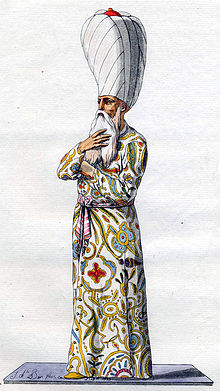
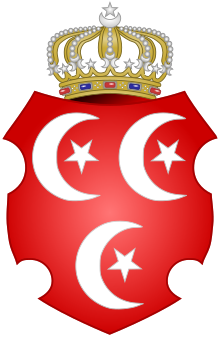

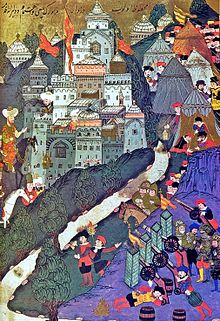

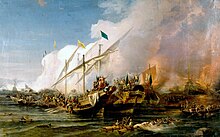
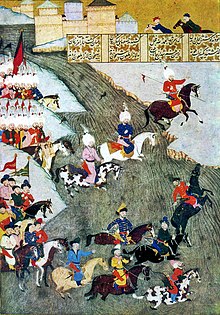


















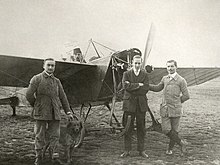

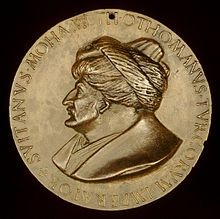

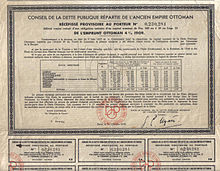






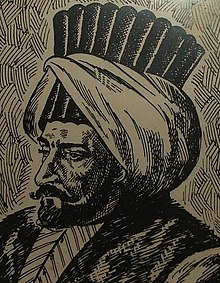



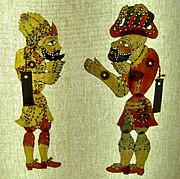




Go and Watch the Turkish Drama Series of Engin Altan's "Barbarosslar" in Urdu only on our youtube channel "My Kids Tube".
ReplyDeletePlease subscribe and Stay Tuned!
https://www.youtube.com/watch?v=W1dzAPWbO7Q
ReplyDeleteComment: Watch the latest episode of the most popular Turkish Series "Kurulus Osman" in Urdu.
https://www.youtube.com/watch?v=byGJN5eHWH4